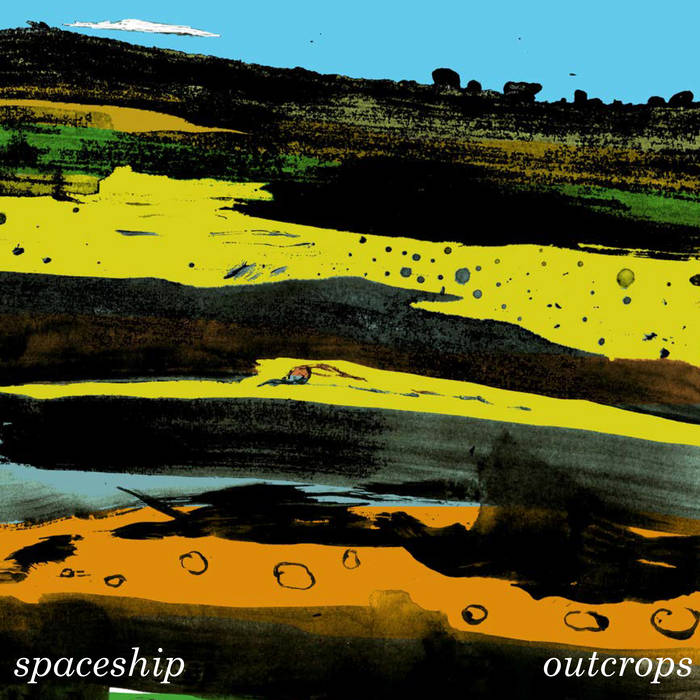Listened to by Paul Scraton:
Spaceship is Mark Williamson, a musician and sound artist based in West Yorkshire, and today marks the release of ‘Outcrops’, a site-specific, haunting and melodic album that is not only inspired by the landscapes of northern England but was recorded there. The sandstone outcrops can be found above the town of Todmorden, and the album was recorded in place, with Williamson taking his synth up into the rocks to create the pieces encased in small caves. Each of the tracks on the album is named for its location and incorporates field recordings and found sounds, and was also created to evoke a particular phase in the geological history of the outcrops – Orchan Rocks evokes the Ocean, Bride Stones the Glacier and so on. This story is also lyrically told in the sleeve notes, describing the rivers as they “surged from the uplands,” the “peaceful, aquatic interlude between the ever-shifting chaos,” and the ice as it “plucked and scraped and tore at the land…”
Crossing the Pennine hills a few weeks ago it came to me once again that how we interpret a landscape, how it makes us feel, is tied to what we know about it – the stories we have heard and what we bring with us as we approach it. The same can be true of works of art. What we know of the author or the painter, the musician or the photographer can shape our interpretation of a work, whether we want it to or not. The knowledge of how it was created feeds into our experience. I sit at my desk in Berlin and listen to the Spaceship album and I can picture the sandstone outcrops and the fields beneath the moors as behind the melodies I’m sure I can hear the wind blow and the birds call. Are they there? I’m not sure. But I know one thing: the next time I cross the Pennine hills the tracks from this album will echo. I have added to my collection, the one that helps me understand a place. The hills will be different somehow. That’s the power of art, the power of music. The power of storytelling, in all its forms.
***





